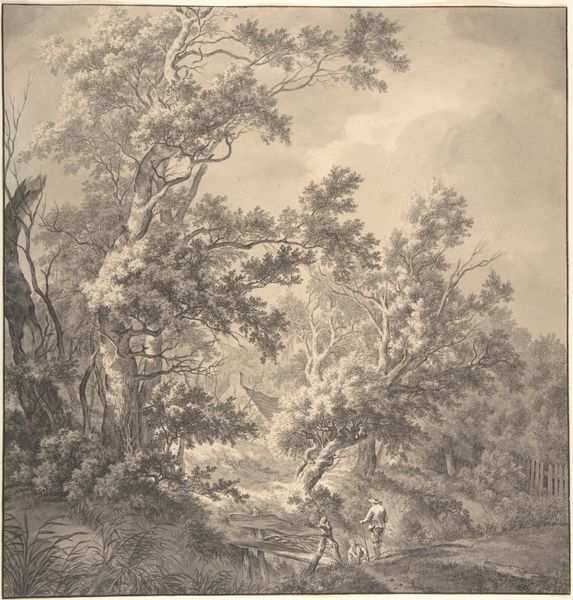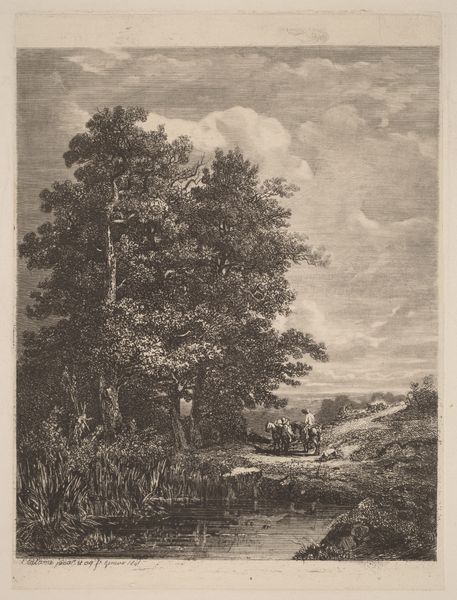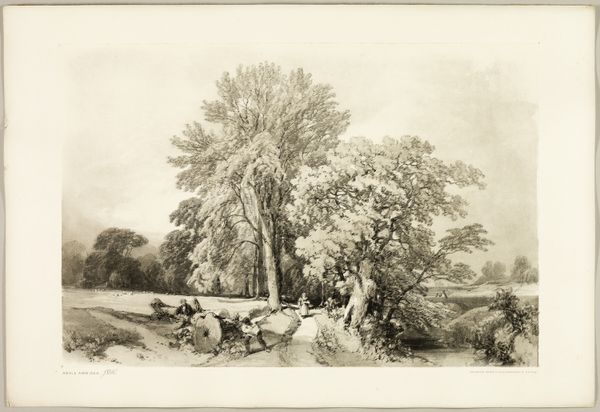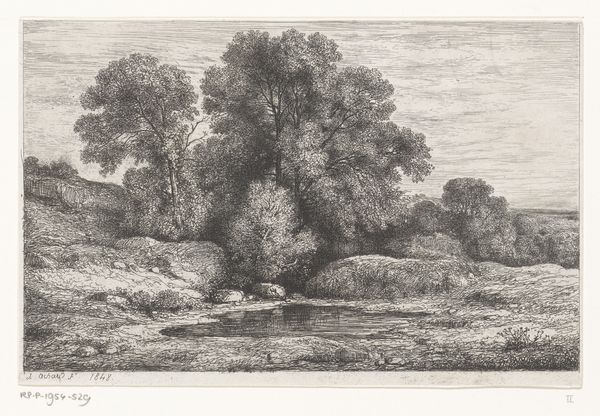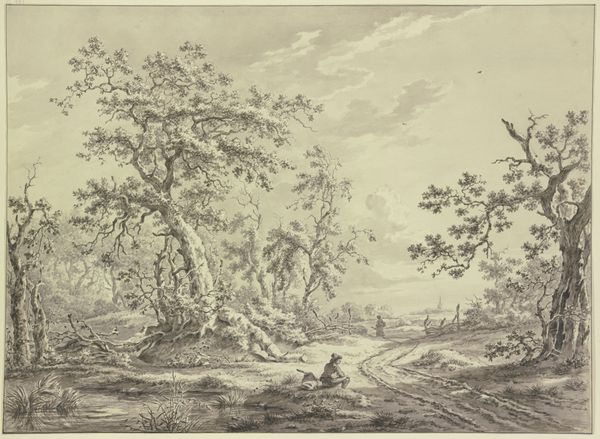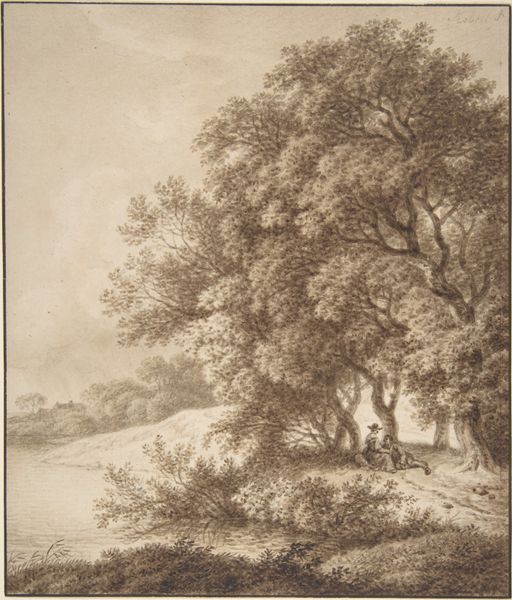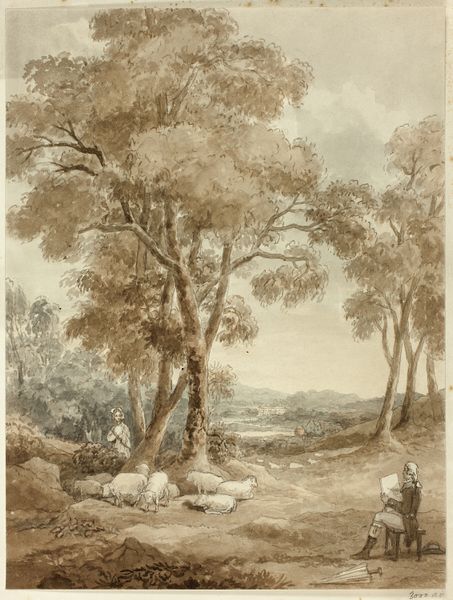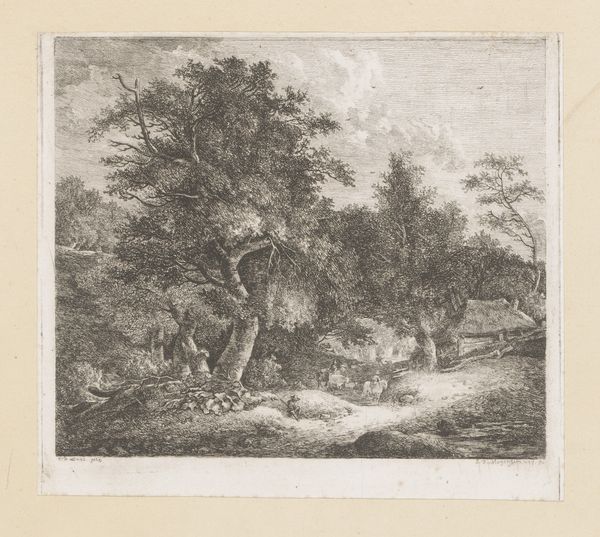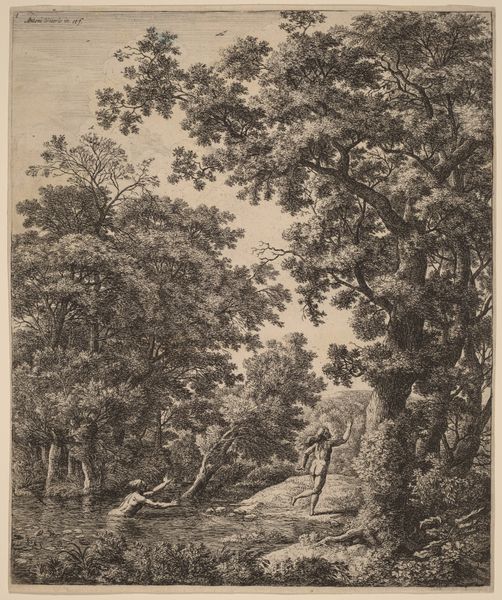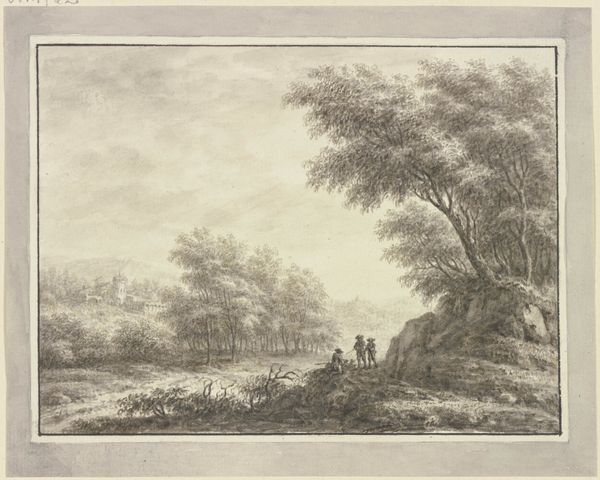
drawing, print, pencil
#
pencil drawn
#
drawing
# print
#
pencil sketch
#
landscape
#
pencil drawing
#
folk-art
#
pencil
#
realism
Copyright: National Gallery of Art: CC0 1.0
Curator: This is "Faisans," a print created using pencil by Karl Bodmer. Editor: The first thing that strikes me is its stillness; the soft greyscale tones evoke a quiet, almost melancholic scene, like a paused moment in the countryside. Curator: It's a detailed rendering of a copse of pheasants in a natural landscape, but consider how the medium, pencil and printmaking, would allow for the reproduction of this scene on a mass scale, potentially for scientific or ethnographic purposes, expanding our understanding of wildlife. Editor: Absolutely, we have to see its reproduction also within a specific socio-political context. These images might have served as documentation of the "natural" world, reinforcing colonial narratives about ownership and control over land and its resources and fauna. How does the easy distribution through printing intersect with prevalent power dynamics and hierarchies of that period? Curator: And if you look closer, it showcases exceptional craft: look at how Bodmer captured the texture of the tree bark, the subtle gradations in the foliage, and even the individual feathers on the birds. The materials themselves would have dictated the type of marks he could make, with different pencil hardnesses and paper surfaces influencing the final texture. Editor: What about the subtle symbolism—could these pheasants, seemingly at rest, represent a broader commentary on the relationship between humans and the natural world, especially considering Europe's changing landscapes with industrialisation? Are we also looking at discussions around the naturalisation of particular species? Curator: Potentially. Looking at the materials and manufacturing, how was this image initially sold, distributed, consumed? It invites consideration about how access to art and knowledge could be widened through reproducible media. Editor: Right. Ultimately, this work serves as a potent reminder that artistic expressions and material realities don’t happen in a vacuum. Examining the history, and production reveals embedded power structures and societal values within an ostensibly bucolic scene. Curator: Thinking of how this print interacts with and contributes to discussions surrounding land ownership and the production of imagery really has amplified its depth, indeed. Editor: Yes, and hopefully we've invited listeners to see art as connected with history, culture, and socio-economic dynamics.
Comments
No comments
Be the first to comment and join the conversation on the ultimate creative platform.

